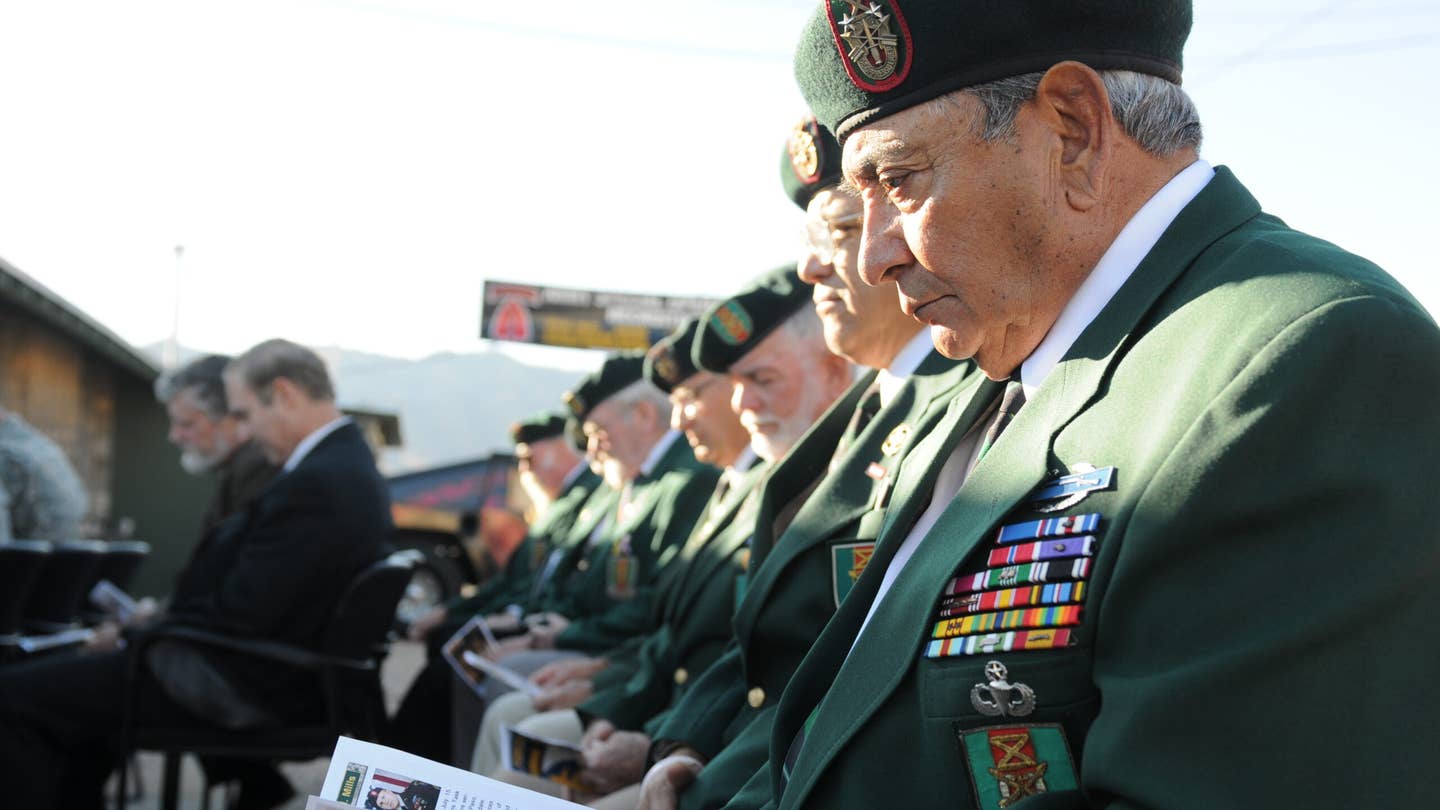Unconventional Green Beret tactics in Vietnam

Isaac Camacho, a Vietnam-era Prisoner of War and retired Green Beret, along with members of the Special Forces Association IX, the Isaac Camacho Chapter, attend the Staff Sgt. Joshua M. Mills Special Forces Recruiting Career Center Dedication Ceremony at Fort Bliss.
SUMMARY
It's no secret the Green Berets employ unconventional tactics. From psychological warfare to elite fighting squats, the United States Army Special Forces play a key role in all conflicts. They especially played a significant role in the Vietnam War. They were responsible for carrying out unconventional warfare tactics to combat the Viet Cong. Let's delve into the history of the Green Berets in Vietnam and how they utilized their unique skills to fight a guerrilla war.
History of the Green Berets in Vietnam
The Green Berets were first deployed to Vietnam in 1957 as part of the Military Assistance Advisory Group. Their mission was to train and advise the South Vietnamese military in counterinsurgency operations. However, as the war escalated, the Green Berets became more involved in combat operations.
Their mission was to disrupt the Viet Cong's operations by gathering intelligence, conducting raids and training local militias. Green Berets trained in unconventional warfare tactics, such as guerrilla warfare, sabotage, and psychological warfare. They worked closely with the local Montagnard tribes, who were also fighting against the Viet Cong.
Unconventional Warfare Tactics
The Green Berets' unconventional warfare tactics proved to be effective against the Viet Cong. They utilized hit-and-run tactics, ambushes, and raids to disrupt the enemy's operations. The Green Berets would often go on long-range reconnaissance patrols deep into enemy territory to gather intelligence and disrupt the enemy's supply lines.
One of the most effective tactics used by the Green Berets was the use of small teams, known as A-teams. These teams consisted of 12 men, including a team leader, weapons sergeant, engineer sergeant, and communications sergeant. Each team member developed a specific skill. Then, they all brought something to the team when it was time to carry out a mission.
A-teams would often work with the local Montagnard tribes to gather intelligence and conduct operations. The Montagnards were a valuable asset to the Green Berets because they knew the terrain and the enemy's tactics. They also provided them with a base of operations in remote areas.
PSYOPS
This elite special forces group also utilized psychological warfare to disrupt the Viet Cong's operations. They would often spread rumors and disinformation to confuse the enemy. To aid in this effort, units would also drop leaflets over enemy-controlled areas, encouraging the Viet Cong to surrender or defect.
One of the most notable psychological warfare operations carried out by the Green Berets was the Phoenix Program.
The Green Beret Phoenix Program is a counter-insurgency effort that is currently being implemented by the United States Army Special Forces. This program is designed to identify, locate, and eliminate high-value targets within enemy organizations operating in various regions around the world. To achieve this, the Green Berets involved in the Phoenix Program use a variety of tactics, including advanced intelligence gathering techniques, covert operations, and precision strikes. Furthermore, they work closely with local intelligence agencies and military units to gather information and coordinate their efforts effectively.
As a result of these tactics, the program has been highly effective in disrupting the activities of enemy organizations and reducing their ability to carry out attacks against American and Allied Forces. It has also contributed to the stability of regions around the world.
However, the program has been the subject of controversy due to allegations of human rights abuses and extrajudicial killings. Despite these criticisms, the Green Beret Phoenix Program remains an important component of the United States' counter-insurgency efforts, and its success in preventing attacks has saved countless lives.
Legacy of the Green Berets
The Green Berets' role in the Vietnam War was significant. They were responsible for carrying out unconventional warfare tactics that proved to be effective against the Viet Cong. Their legacy can still be seen today in the Army's Special Forces.
Adding to that, the Green Berets have continued to carry out missions around the world, including Afghanistan, Iraq, and Syria. They have adapted their tactics to modern warfare but have maintained their focus on unconventional warfare. Their unconventional warfare tactics proved to be effective against the Viet Cong, and they left a lasting legacy in the Army's Special Forces. The Green Berets utilized hit-and-run tactics, small teams, and psychological warfare to disrupt the enemy's operations. While controversial at times, their contributions to the war effort cannot be ignored.
This Green Beret wants you to ruck 50 for the fallen this year.
SHARE
